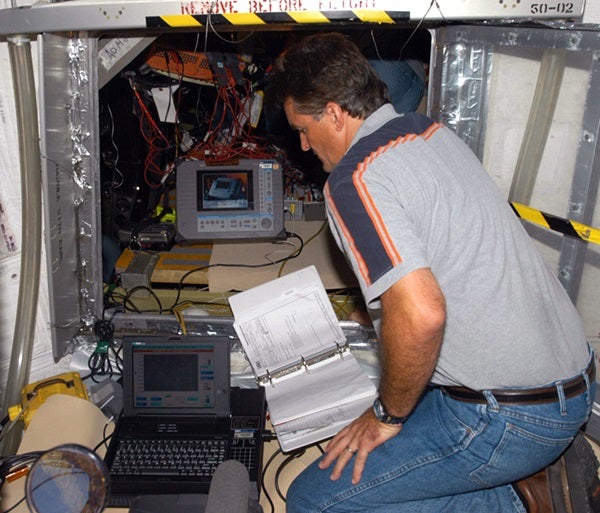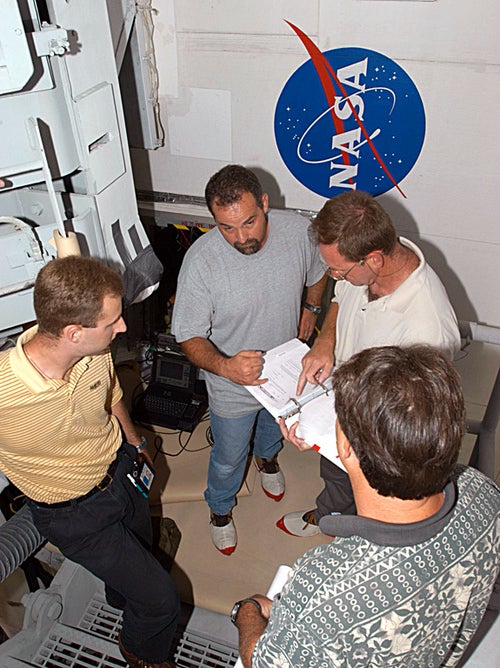NASA engineers believe they understand Discovery’s launch-scrubbing fuel-gauge problem well enough to begin a new countdown over the weekend. The space shuttle would blast off no sooner than 10:39 a.m. EDT Tuesday, July 26, on the first mission in the program’s two-and-half year hiatus.
In the past week, hundreds of engineers have examined Discovery’s Engine Cutoff sensor circuit. On July 13, one of four low-liquid-hydrogen-fuel sensors failed a test in which computers sent signals to simulate a dry tank. When the tank was drained, the same sensor indicated it was covered in fuel for 3 more hours.
While engineers remain unable to locate the point of failure, they’ve concluded electromagnetic interference is the most likely cause. Some changes to the shuttle’s external fuel tank designed to improve flight safety, such as the installation of extra heaters to prevent ice formation, may cause such a problem.
“Right now, we think we have eliminated all the common causes that we believe could do this, and we’ve done everything we possibly could on the vehicle,” Parsons says.
Last night, shuttle-program managers decided to forego another fueling test and, instead, go for a launch attempt. “We believe the best way to go through this is to do a countdown,” Parsons says. “If the sensors work exactly like we think they will, then we’ll launch on that day. If anything goes not per the plan that we’ve laid out in front of us, then we’ll have a scrub and we’ll have to talk about it.”
The troubleshooting plan first calls for engineers to complete tests to see what role electromagnetic interference plays in the sensor-circuit malfunction. Then, workers will swap circuits for two of the sensors. Should the problem recur during the countdown, this will give engineers a means of isolating the glitch to either the wiring or a sensor electronics box located in the shuttle’s aft engine compartment. Next, engineers will shore up electrical grounding as a further step to reduce interference.
During the countdown, which begins Saturday, engineers will closely watch the behavior of the sensors as the tank is filled with super-cooled fuel.
There are at least three additional opportunities for a launch during the current window, which extends until July 31, even if Discovery fails to launch Tuesday. Program managers are looking at the possibility of additional launch opportunities in the first week of August.











